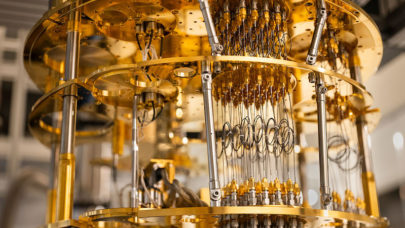While the supercomputing digerati argue about what an exascale machine will look like at the end of this decade, recent history suggests that there will be a healthy diversity of designs, at least with regard to processor architecture. As of this week, there are 20 known petascale systems deployed, which in aggregate encompass five different varieties of microprocessors. And that level of diversity shows no signs of reversing itself.
Of the 20 petascale supercomputers up and running today, eight use x86 CPUs (AMD Opterons or Intel Xeons) exclusively; seven employ an x86/GPU combo; two are based on Fujitsu’s SPARC64 CPUs; one uses the Chinese ShenWei SW1600 processor; one is powered by IBM’s PowerPC 450 CPU, and the final system uses the PowerXCell 8i alongside AMD x86 CPUs.
Below are the current systems that have achieved at least one petaflop of peak performance. Not all of these are on the latest TOP500 list since a number of them were installed or upgraded since the rankings were updated in November 2011.
| System | Country | Processor | Interconnect | Petaflops |
| K Computer | Japan | Fujitsu SPARC64 | Tofu | 11.28 |
| Tianhe-1A | China | Intel x86/NVIDIA GPU | Galaxy | 4.70 |
| Nebulae | China | Intel x86/NVIDIA GPU | InfiniBand | 2.98 |
| Jaguar | US | AMD x86 | Gemini | 2.33 |
| TSUBAME 2 | Japan | Intel x86/NVIDIA GPU | InfiniBand | 2.29 |
| CURIE | France | Intel x86/NVIDIA GPU | InfiniBand | 2.00 |
| Helios | Japan | Intel x86 | InfiniBand | 1.50 |
| Roadrunner | US | AMD x86/PowerXCell | InfiniBand | 1.37 |
| Lomonosov | Russia | Intel x86/NVIDIA GPU | InfiniBand | 1.37 |
| Cielo | US | AMD x86 | Gemini | 1.36 |
| Tianhe-1A Hunan | China | Intel x86/NVIDIA GPU | Galaxy | 1.34 |
| Pleiades | US | Intel x86 | InfiniBand | 1.32 |
| Hopper | US | AMD x86 | Gemini | 1.29 |
| Tera-100 | France | Intel x86 | InfiniBand | 1.25 |
| Kraken | US | AMD x86 | SeaStar | 1.17 |
| Oakleaf-FX | Japan | Fujitsu SPARC64 | Tofu | 1.13 |
| Sunway Blue Light | ChinaChina | ShenWei SW1600 | InfiniBand | 1.07 |
| HERMIT | Germany | AMD x86 | Gemini | 1.04 |
| Mole 8.5 | China | Intel x86/NVIDIA GPU | InfiniBand | 1.01 |
| JUGENE | Germany | PowerPC 450 | Custom | 1.00 |
As you can see, more than a third of the current petascale supers rely solely on x86 CPUs, either AMD Opterons or Intel Xeons. But the x86/GPU combo systems are nearly as numerous. In fact, since the Opteron-only Jaguar system at Oak Ridge National Lab is now being transformed into the x86/GPU Titan machine, this hybrid arrangement is becoming the most popular configuration. It’s notable that half of the x86/GPU petaflop machines are currently deployed in China.
The fastest x86 CPUs (in this case, the top-end 8-core Sandy Bridge Xeons) can deliver around 160 gigaflops, while consuming 130 to 135 watts. On the other hand, NVIDIA’s top-of-the line Tesla part (the M2090) can hit 665 gigaflops, while consuming 225 watts. Although harder to program than CPUs, the superior performance and performance/watt of GPUs is driving the rapid adoption of these graphics processors in high performance computing.
The newest petascale system is the Oakleaf-FX, a Fujitsu supercomputer based on its PRIMEHPC FX10 servers. That machine was just completed last week for the University of Tokyo. Kyushu University has ordered a system with PRIMEHPC FX10 servers as well, although in this case, it’s a sub-petascale machine (691 teraflops) and gets three-quarters of its flops from adjoining x86-based PRIMERGY CX400 nodes.
Oakleaf-FX represents the first supercomputer installed with Fujitsu’s newest SPARC64 IXfx CPUs. Its precursor, the SPARC64 VIIIfx, powers RIKEN’s 10-plus petaflop K Computer, which is currently the reigning champ on the TOP500. The SPARC64 VIIIfx is an 8-core chip and at 2.00 GHz delivers 128 gigaflops, while the newer SPARC64 IXfx, at 1.85 GHz contains 16 cores and delivers 236.5 peak gigaflops. Fujitsu says a PRIMEHPC FX10 cluster can scale up to 23.2 petaflops, which would entail a system with about 100 thousand of these CPUs.
Fujitsu’s SPARC64 fx series chips were specifically designed with HPC in mind, something they have in common with the Chinese ShenWei SW1600 processor that was developed at the Jiangnán Computing Research Lab. Like the SPARC64 IXfx, the SW1600 is a 16-core RISC processor, although it runs quite a bit slower that its Japanese counterpart. At 1 GHz, the Chinese chip delivers around 140 gigaflops.
The only system currently deployed with SW1600 silicon (that we know of) is the Sunway Blue Light, a one-petaflop machine that is housed at the National Supercomputing Center in Jinan. Announced in October 2011, the Sunway machine represents the first Chinese supercomputer built with domestically designed processors
There is currently only a single petascale Blue Gene supercomputer in the field, JUGENE, a one-petaflop Blue Gene/P system at Forschungszentrum Jülich that is powered by more than 73,000 PowerPC 450 CPUs. The PowerPC architecture, which has its roots in the embedded computing space, was chosen mainly for its energy efficient performance. At 850 MHz, the chip delivers a modest 13.6 gigaflops, but draws only around 25 watts of power.
The odd one out is the PowerXCell 8i, a Cell processor variant IBM designed for HPC duty. The PowerXCell 8i debuted in the world’s first petaflop system, Roadrunner, which was booted up in 2008. That system employed the processor as an accelerator alongside AMD Opteron CPUs, using IBM’s QS22 blade server. Each PowerXCell 8i consists of a Power Processing Element and eight Synergistic Processing Elements (SPEs) that together deliver 102.4 gigaflops — a whopping amount for a 2008-era processor.
Unfortunately for IBM, GPU computing was coming onto the scene just as the PowerXCell 8i was debuting. Thanks to a concerted effort by NVIDIA to build GPU accelerators for HPC, not to mention a more favorable business model for graphics processors, IBM decided to abandon any follow-up to the PowerXCell 8i (At one point IBM was said to have a 32-SPE PowerXCell on the drawing board.) Roadrunner would be the first and last Cell processor-based supercomputer.
Even though the PowerXCell design died an untimely death, there are some new processors on the horizon to takes its place. The most well known is Intel’s Many Integrated Core (MIC) chip, a manycore x86 architecture based on the “Larrabee” prototype. The first implementation, known as Knights Corner, is expected to deliver more than a teraflop of double precision floating point performance when its introduced in late 2012 or early 2013.
The Stampede supercomputer, which will be installed at the Texas Advanced Computing Center (TACC) later this year, will use Knights Corner and Xeon parts as the computational foundation. That system is expected to top 10 petaflops when it officially goes into production in early 2013.
Later this year two multi-petaflop Blue Gene/Q supercomputers, powered by the new Power A2 CPUs, will be brought online. Sequoia, a 20-petaflop supercomputer, will be installed at Lawrence Livermore National Lab, and Mira, a 10-petaflop machine will go to Argonne. Both are expected to go into production before the end of the year. UK’s Daresbury Laboratory is also in line for a petaflop-plus Blue Gene/Q system, although the deployment date has not been set.
A derivative of the PowerPC architecture that was the basis of the Blue Gene/L and Blue Gene/P ASICs, the Power A2 is a much more powerful chip. Instead of the measly 4 cores of the PowerPC 450, the new silicon houses 18 cores — 16 for the application, 1 for the OS, and a spare. And even at a modest 55 watts (1.5 GHz), the Power A2 delivers 204.8 gigaflops. Thanks to the chip’s exceptional energy efficiency, Blue Gene/Q systems are currently the number 1 and 2 systems on the latest Green500 list, although both of these are sub-petaflop machines.
Other petascale supercomputers expected to show up in 2012 include the aforementioned Titan at Oak Ridge (10 to 20 petaflops), Blue Waters at NCSA ( 11.5 petaflops), the SuperMUC system at Leibniz Supercomputer Center (3 petaflops). The first two will use the x86/GPU hybrid configuration using Opteron CPUs and the upcoming NVIDIA Kepler GPUs. SuperMUC is all x86 Xeons.
The Chinese designed Godson-3C processor is also expected to eventually show up in some petascale systems, although not this year. The 16-core chip is said to deliver 512 gigaflops and is slated to launch sometime in 2013. According to Godson processor lead designer Weiwu Hu, the 3C chips will be used to power a petascale supercomputer build by Dawning (now Sugon).
There is also the FeiTeng processor, which is being developed by China’s National University of Defense Technology. Although no petascale systems based the these chips have been announced, it offers China yet another option for building native supercomputers in the future.
So what does this mean for exascale? If history repeats itself, the first such systems will be powered by exotic processors, but eventually more commodity-based silicon will take over. Power consumption is the biggest constraint for large supercomputers now, so we may very well see other processor architectures like ARM come to the fore. And with the Chinese developing their own stable of HPC processors, the whole supercomputing game could change before the end of the decade.



























































